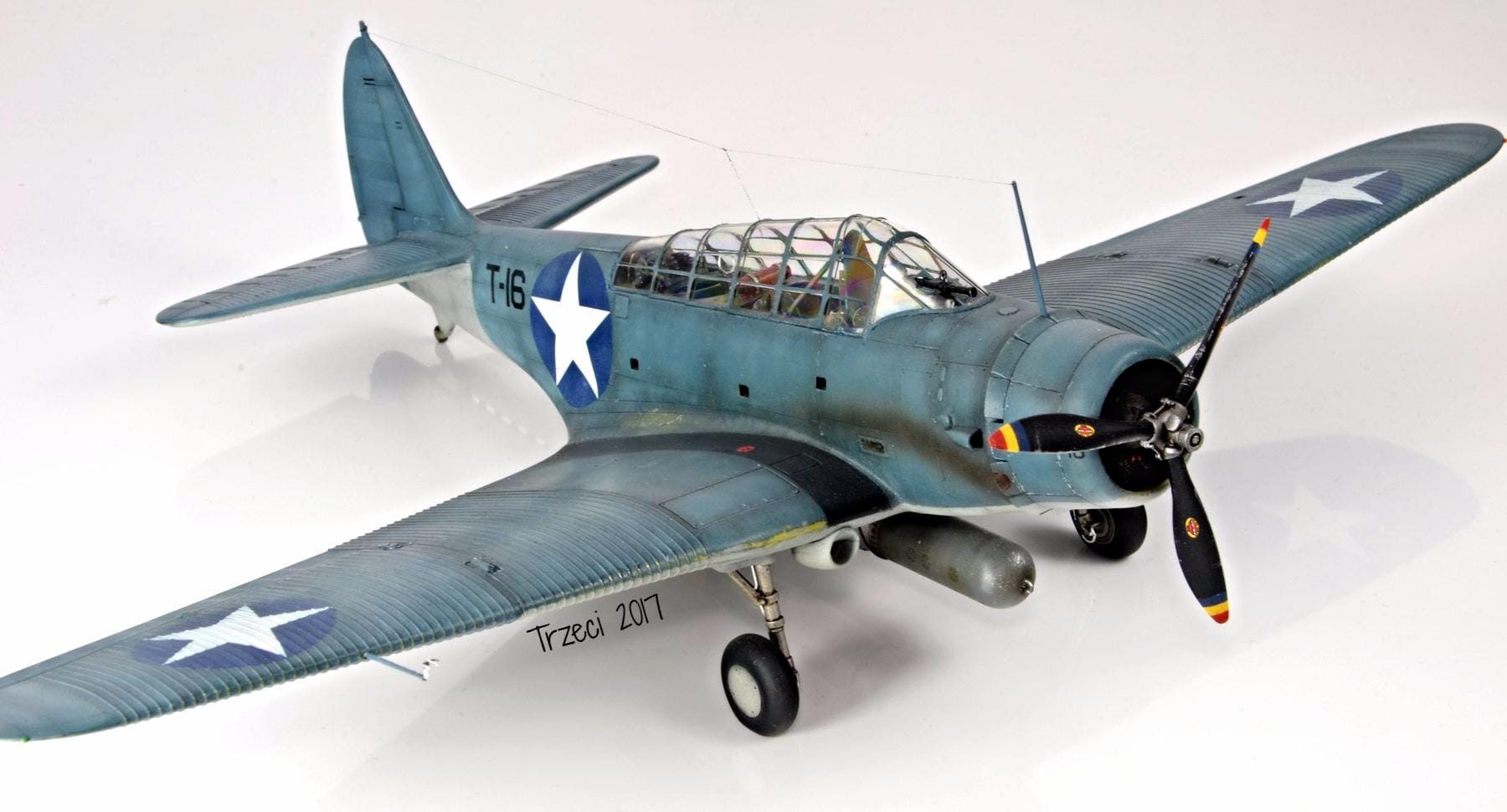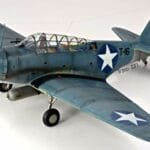The Douglas TBD Devastator. A name that echoes both power and tragedy. This aircraft, a marvel of engineering in the mid-1930s, represents a pivotal chapter in naval aviation history. Join us as we explore the Devastator’s journey from cutting-edge innovation to obsolescence, culminating in its fateful role at the Battle of Midway. It’s a story of courageous pilots, rapid technological advancement, and the unforgiving realities of war.
The Rise of a Naval Aviation Pioneer
The Douglas TBD Devastator arrived on the scene in 1937, a sleek, all-metal monoplane with hydraulically folding wings—a true game-changer. It was the US Navy’s first all-metal, monoplane torpedo bomber, and it embodied the future of naval aviation. Pilots likely felt a sense of awe stepping into the enclosed cockpit, a feature that provided unprecedented protection from the elements. This innovative aircraft, designed from the ground up for torpedo bombing, represented a significant leap forward compared to the adapted biplanes that preceded it. It was a symbol of American ingenuity and the Navy’s ambition to dominate the skies. Are you interested in learning more about other captivating art pieces like the Cupid and Psyche by Canova?
However, the rapid pace of technological development in the late 1930s would soon cast a shadow over the Devastator’s bright future. By the time the United States entered World War II, the TBD was already showing signs of obsolescence. Newer, faster, and more agile aircraft were emerging, and the Devastator’s limitations were becoming increasingly apparent. Nevertheless, it remained a key component of the US Navy’s air power, and its crews prepared for the inevitable conflict.
The Devastator at Midway: A Turning Point
The Battle of Midway in June 1942 would tragically seal the Devastator’s fate. This pivotal battle, a clash of carriers and aircraft, exposed the Devastator’s vulnerabilities in the starkest terms. The TBD squadrons, tasked with crippling the Japanese fleet, flew bravely into the heart of enemy defenses, facing the formidable Mitsubishi Zero fighters. The Zeroes, with their superior speed and maneuverability, decimated the Devastator formations. Of the 41 Devastators launched, only six returned. This devastating loss rate highlighted the aircraft’s obsolescence and the urgent need for a more modern torpedo bomber. Some historians suggest that factors beyond the Devastator’s inherent limitations, such as inadequate fighter escort and flawed torpedoes, contributed to the heavy losses. However, Midway undoubtedly marked the end of the Devastator’s frontline service.
The Legacy of the TBD Devastator
Despite its tragic end, the Devastator’s legacy extends beyond Midway. It served as a crucial stepping stone in the evolution of naval aviation, paving the way for more advanced aircraft like the Grumman TBF Avenger. The Devastator’s story underscores the importance of continuous innovation in the face of evolving threats. It also serves as a testament to the courage and sacrifice of the pilots and crews who flew these aircraft into battle, knowing the risks involved.
Art aficionados will not want to miss the Dionysus Feast Painting for another incredible artwork. While no complete original TBD Devastators exist today—the last were removed from US Navy inventory by late 1944—a full-scale replica, used in the movie Midway, now resides at the USS Midway Museum in San Diego. This replica offers a tangible connection to the past, allowing us to appreciate the Devastator’s innovative design and remember the brave individuals who flew this iconic aircraft.
Where Are the Devastators Now?
Sadly, no original TBD Devastators exist today. They were all eventually lost to time and the elements, scrapped, or destroyed in combat. The last of these aircraft were retired from active US Navy service by late 1944, often repurposed for training before their final dismantling. However, fragments of wrecked Devastators may still rest on the ocean floor, silent witnesses to the battles they fought.
The Devastator Replica: A Glimpse into the Past
While no flyable TBD Devastators remain, a remarkable full-scale replica exists at the USS Midway Museum in San Diego. This meticulous recreation, donated to the museum in 2019 after being used in the film Midway, allows visitors to experience the Devastator’s impressive size and unique design. It serves as a powerful tribute to this historic aircraft and the brave crews who flew it.
How Fast Was the Devastator?
The TBD Devastator’s listed top speed was 206 mph (332 km/h), which may seem fast for the era, but was becoming a liability in the rapidly evolving world of wartime aviation. Its effective combat speed, however, was likely much lower due to the weight of its torpedo and its less-than-aerodynamic design. This made it a vulnerable target for faster, more agile fighters like the Japanese Mitsubishi Zero. The torpedo’s weight is thought to have affected maneuverability and speed, making accurate deployment challenging.
Beyond Top Speed: Other Performance Factors
It’s important to remember that top speed is only one element of an aircraft’s overall performance. The Devastator’s limited maneuverability and the relatively slow speed required for torpedo release (115 mph or 185 km/h) further reduced its effectiveness in combat. While its speed was initially competitive, rapid advancements in aircraft technology quickly rendered it obsolete.
How Many TBD Devastators Were There?
Only 130 TBD Devastators were ever built, including the prototype. This relatively small production run, combined with the aircraft’s high loss rate in combat, contributed to its rarity today. Of these 130 aircraft, 41 were deployed at the Battle of Midway, highlighting the significance of this engagement in the Devastator’s history.
From 130 to Zero: A Story of Attrition
The Devastator’s story is one of rapid obsolescence and heavy losses. While it served as a valuable, albeit costly, lesson in the rapid evolution of military technology, its brief operational life underlines the constant need for adaptation and advancement in warfare. The devastating loss rate at Midway hastened the Devastator’s withdrawal from front-line service, ultimately leading to its complete removal from the US Navy’s inventory by 1944. The Devastator’s story, while tinged with tragedy, reminds us of the bravery and sacrifice of those who served, and the constant drive for innovation in the face of adversity.
- Discovering Granton, WI: A Hidden Gem in Wisconsin’s Heartland - November 22, 2024
- Understanding Fayette County Property Taxes: A Guide to the PVA - November 22, 2024
- Genesee County Probate Court: Your Guide to Wills, Estates, & Guardianships - November 22, 2024















